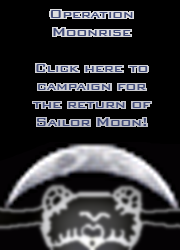 Some of you may remember an older article about Sailor Moon Flowers that we posted a long time ago. The Happy Valley Sailor Moon sunflower blooms during July, and many bloggers have made the trek to Showa Kinen Park to see the many sunflowers there, and they have posted some beautiful shots of Sailor Moon's floral namesake. We'd also like to think that they are a little late blooming this year so they could have coincided with all these major Sailor Moon announcements as of late. We thought we'd share a few of the best shots! This one in particular comes from Saccyon. Tanpopo-jyo features two shots of the field and a single flower (third and fourth pictures). The first photo on Kiyo1503 has a nice photo of a young flower! Saccyon has lots of great closeups of the sunflowers, including one with a bee! Pennginn Muranorimaki has a not-so-great shot of a part of the field that looks like it's been trampled on. Yhanacomachi has one simple but wonderful hi-res closeup of the sunflower with a bee. Inkyotei begins and ends with Happy Valley Sailor Moon. Tachiaoi has one of a young flower in bloom, and there are plenty more closeups at Rin Hikari's blog! To finish off, Nobutaka has posted a picture of the field and a closeup.
Some of you may remember an older article about Sailor Moon Flowers that we posted a long time ago. The Happy Valley Sailor Moon sunflower blooms during July, and many bloggers have made the trek to Showa Kinen Park to see the many sunflowers there, and they have posted some beautiful shots of Sailor Moon's floral namesake. We'd also like to think that they are a little late blooming this year so they could have coincided with all these major Sailor Moon announcements as of late. We thought we'd share a few of the best shots! This one in particular comes from Saccyon. Tanpopo-jyo features two shots of the field and a single flower (third and fourth pictures). The first photo on Kiyo1503 has a nice photo of a young flower! Saccyon has lots of great closeups of the sunflowers, including one with a bee! Pennginn Muranorimaki has a not-so-great shot of a part of the field that looks like it's been trampled on. Yhanacomachi has one simple but wonderful hi-res closeup of the sunflower with a bee. Inkyotei begins and ends with Happy Valley Sailor Moon. Tachiaoi has one of a young flower in bloom, and there are plenty more closeups at Rin Hikari's blog! To finish off, Nobutaka has posted a picture of the field and a closeup.
And, Finally We Report About That Other Orchid... A long time ago, an anonymous commenter (or two) pointed us to a fourth flower named for Sailor Moon. We thought that this post would be a better place to talk about it! Sophrolaeliocattleya Gemstone 'Sailor Moon' is a hybrid orchid, the result of a cross between Sophrocattleya Batemanniana 'Bette' and Sophrolaeliocattleya Phillip Ho 'Alisa'. The words under the picture tell us that this orchid is a souvenir, and we are inclined to believe that this flower is no longer commercially available. We searched a database of plant varieties in Japanese, and this orchid is no longer listed. It may lie in a private collection and sold privately, but despite our best efforts to search florists' websites and other retail sites, we were unable to find this orchid. Most times you can hit up a database and type in a fraction of the name or the variety number (CM-1975-1) and find some trace of it, but we had no such luck :(. If any of our fans know anything else about this orchid (like how it got it's name or whatever happened to this Dogashima horticulturist) please let us know!
A long time ago, an anonymous commenter (or two) pointed us to a fourth flower named for Sailor Moon. We thought that this post would be a better place to talk about it! Sophrolaeliocattleya Gemstone 'Sailor Moon' is a hybrid orchid, the result of a cross between Sophrocattleya Batemanniana 'Bette' and Sophrolaeliocattleya Phillip Ho 'Alisa'. The words under the picture tell us that this orchid is a souvenir, and we are inclined to believe that this flower is no longer commercially available. We searched a database of plant varieties in Japanese, and this orchid is no longer listed. It may lie in a private collection and sold privately, but despite our best efforts to search florists' websites and other retail sites, we were unable to find this orchid. Most times you can hit up a database and type in a fraction of the name or the variety number (CM-1975-1) and find some trace of it, but we had no such luck :(. If any of our fans know anything else about this orchid (like how it got it's name or whatever happened to this Dogashima horticulturist) please let us know!
Friday, August 07, 2009
Sailor Moon in Full Bloom in Japan!
Posted by
sailordees
at
9:04 p.m.
![]()
Labels: Flowers, Japan, Merchandise, Miscellany, Sailor Moon
Subscribe to:
Post Comments (Atom)





 Toei's Official 20th Anniversary DVD Site
Toei's Official 20th Anniversary DVD Site
No comments:
Post a Comment